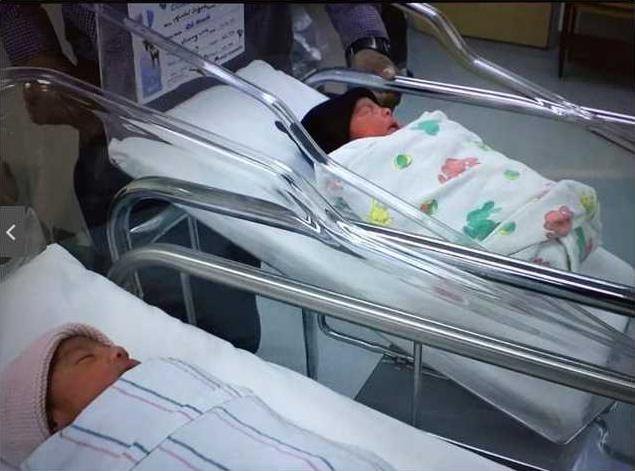Twins share a lot of things in common their looks, personality traits and, in most cases, their birthdays.
But for a pair of San Diego twins, this isnt the case.
As KGTV San Diego reported, a pair of twins born over New Years Eve have completely different birthdays. Thats because girl Jaelyn Valencia was born at 11:59 p.m. on Dec. 31, 2015, where as her brother, Luis Valencia Jr., was born at 12:01 a.m. on Jan. 1, 2016.
This was an even more surprising birth since the Valencias didnt know they were having twins, KGTV reported.
It was around midnight and she was just popping out. It was crazy seeing her little head pop out first, the father, Luis Valencia, told KGTV. I was not really expecting two, so it's a big blessing to have two of them, boy and a girl for New Years.
Of course, these twins arent the only ones born without the same birthday. In fact, back in October 2015, a Washington state couple saw their first baby born in September, where as their second baby was born months later. This was because of a rare condition called twin to twin syndrome, in which one twin draws the blood from another, leaving one of the twins sick and weakened without enough blood supply, delaying the twins birth, ABC News reported.
The San Diego twins story comes at a time when there are more twins in the United States than before, according to a new report, which found that the U.S. twin birth rate reached a record high in 2014. The twin birth rate hit 33.9 twins for every 1,000 births, which is up from the 33.7 twins per 1,000 births in 2013, The Huffington Post reported.
But for a pair of San Diego twins, this isnt the case.
As KGTV San Diego reported, a pair of twins born over New Years Eve have completely different birthdays. Thats because girl Jaelyn Valencia was born at 11:59 p.m. on Dec. 31, 2015, where as her brother, Luis Valencia Jr., was born at 12:01 a.m. on Jan. 1, 2016.
This was an even more surprising birth since the Valencias didnt know they were having twins, KGTV reported.
It was around midnight and she was just popping out. It was crazy seeing her little head pop out first, the father, Luis Valencia, told KGTV. I was not really expecting two, so it's a big blessing to have two of them, boy and a girl for New Years.
Of course, these twins arent the only ones born without the same birthday. In fact, back in October 2015, a Washington state couple saw their first baby born in September, where as their second baby was born months later. This was because of a rare condition called twin to twin syndrome, in which one twin draws the blood from another, leaving one of the twins sick and weakened without enough blood supply, delaying the twins birth, ABC News reported.
The San Diego twins story comes at a time when there are more twins in the United States than before, according to a new report, which found that the U.S. twin birth rate reached a record high in 2014. The twin birth rate hit 33.9 twins for every 1,000 births, which is up from the 33.7 twins per 1,000 births in 2013, The Huffington Post reported.








